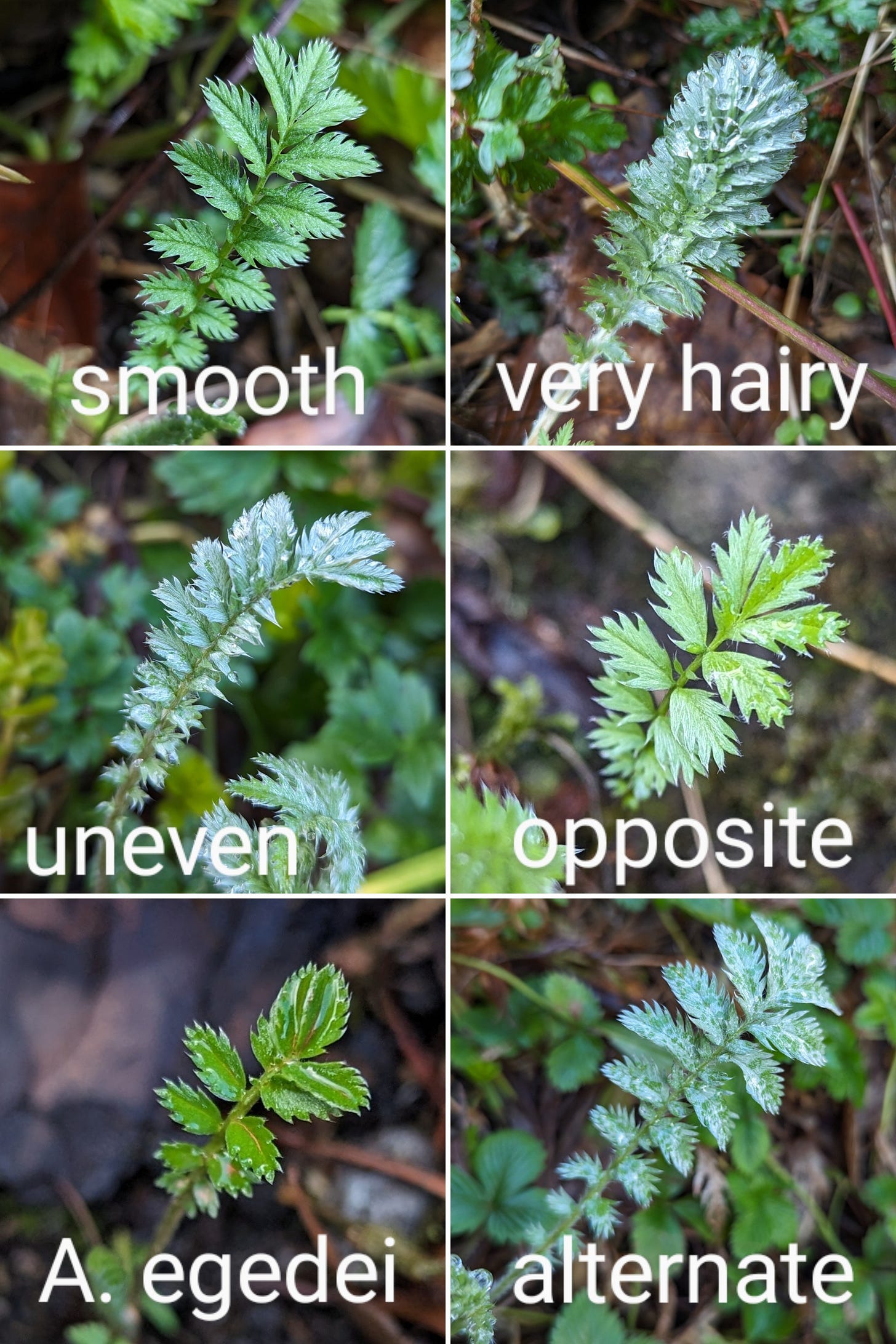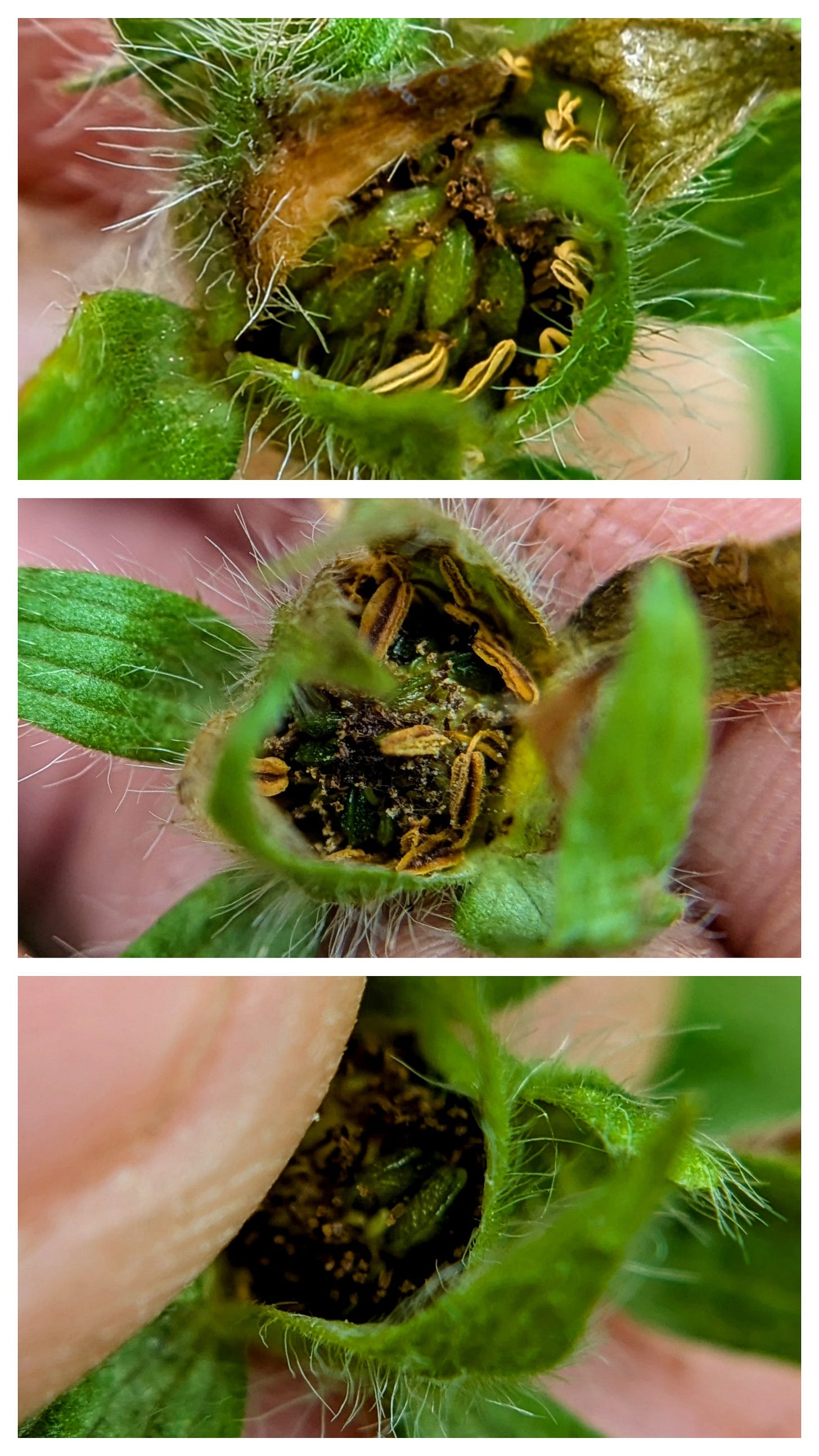Just a quick little update about my Silverweed breeding project. For those who need a refresher, browse back on the series. For those who are up to date, let’s dive in.
I’ve mentioned in the past that I intended to make wide crosses before selectively breeding any Silverweed for larger storage roots. The idea was to avoid any inbreeding depression - basically, I want to make sure the starting genes are super healthy before I force things to start in-breeding. In practice, what I have seen is very little variation in my entire Silverweed grex. As far as I can see, storage root size is tightly correlated with soil conditions. Rocky soil can host Silverweed, but the root size will suffer.
As an aside, poor compacted soil will stress Silverweed into flowering as opposed to extending itself with stolons (like a Strawberry). This means that if you would like to join me in Silverweed breeding, make sure you plant your Silverweed in pots with mediocre soil.
So I see wide crosses as a way of throwing the genetics of Silverweed in the air. There is much variation in leaf morphology but very little variation in storage root morphology. Hairiness (the thing that brings about the silver colour) is better at trapping moisture. I’ve seen some evidence that environmental stimulus has something to do with this - if a place is a bit drier and sunnier, the Silverweed may be more prone to throwing out hairy leaves to make up for poor soil moisture. And as you may have guessed, smooth leaves is probably an adaptation to too much moisture (water will slide off). As for opposite and alternate leaflet branches - I don’t know. They seem to crop up with equal propensity as far as I can tell.
Back to topic at hand, two springs ago I grew Potentilla crantzii out from seed and nurtured some Potentilla nepalensis plug plants into more robust specimens.
I chose P. nepalensis because there are cryptic references to it having edible roots amongst other things, read about that in my deep dive.
I chose P. crantzii because it has some pretty great cold climate adaptation (in my area of the UK it was basically evergreen). Read more about that in my deep dive.
I did two way crosses of these with Common Silverweed (Argentina anserina syn. P. anserina) and discovered some interesting things. To help you understand, two way crosses are when you cross plant A with plant B and then plant B with plant A, switching which is the “mother” plant that bears the seed.
All my crosses where A. anserina were the parent failed (no seed set). My theory about this is that Common Silverweed strongly prefers vegetative propagation. To Silverweed, flowering and seed set is an afterthought (or an act of desperation before dying). The hormones that control flowering are likely much lower in amount than those that control those creeping stolons.
Where P. Nepalensis was the mother, I seemed to hit on some success. I emasculated some the flowers before-hand so that they couldn’t be self-fertilised (Nepal Cinquefoil has this quality) and rubbed a detached Silverweed flower’s anthers all over the stigma. Because I wasn’t completely certain that I was the first to this flower, I also did some comparisons with a self pollinated Nepal Cinquefoil. You can see that the self-pollinated flower has much better seed set. I would say that a poorly set flower from a wide cross is indicative of some pollen incompatibility, but at least some of the Silverweed pollen has resulted in some seed!
I also tried crossing P. crantzii (alpine cinquefoil) with Silverweed. P. crantzii is an interesting plant as it is able to set seed without fertilisation, but the seed development of such a process relies on pollination and is allegedly more efficient with pollen from a relative than the same species. In real terms, I might have accidentally hit on an ideal crossing partner for Silverweed. As for the Nepal Cinquefoil, I have compared self pollinated seed set with my cross and note that the seed set is lower for my own cross. Unfortunately, I was lazy and didn’t emasculate the Silverweed cross so its end result will be murkier. While I was at it, I also crossed it with Nepal Cinquefoil just for fun and was happy to also find seed set.
All in all, I’ve had fun and have discovered some interesting things about crosses. Now I am checking eagerly for the seeds to ripen.
I have some grand plans for these seeds if they germinate (and are hybrids) which I talk about in the next post.
Until next time.
References
Agamospermy of P. crantzii
Biosystematic studies on the species aggregate Potentilla anserina L.








I found a patch of A. Anserina in Coulsdon. I hope it flowers so I can collect some pollen as I have P. Montenegrina and Reptans. Have made some haphazard crosses this week.